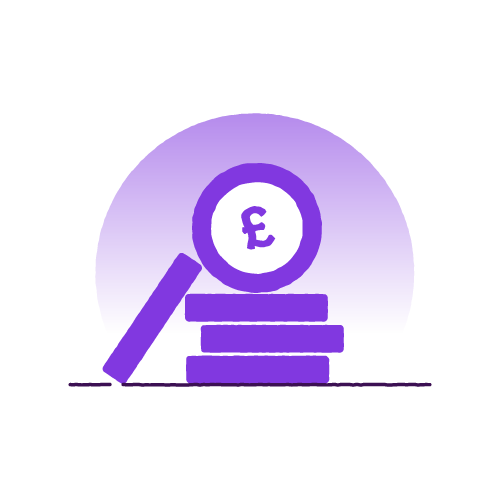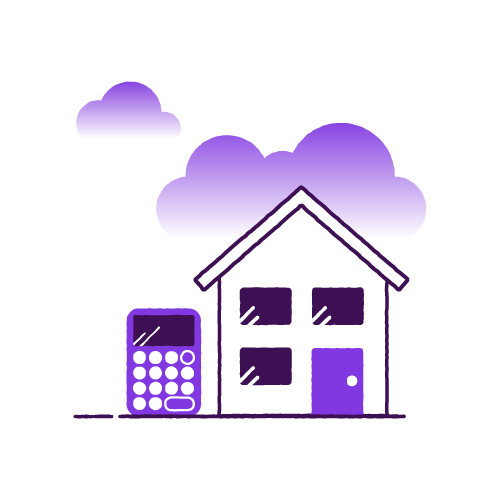On this page

Why it's important to understand rental yield
If you’re a buy to let landlord, there are two ways to make money from your property.
Firstly, through any increase in the value of the property you buy. Secondly, through the rent you receive from tenants. Balancing these two factors is key to finding a good rental yield.
In this guide, we’ll cover what rental yield is, why it’s important – and how you can find a good rental yield for your property.
What is rental yield?
Rental yield is how much you could expect to receive in rent each year from your buy to let investment. Rental yield is expressed as a percentage – reflecting your rental income against the property’s market value.
While calculating rental yield can give you an indication of whether investing in a buy-to-let property is worth it, there’s other factors to consider. You’ll also need to think about whether there might be any problem finding tenants, collecting rent or void periods, for example. Then, there’s capital growth – the value by which your property is set to increase over time.
All of these can impact your decision on whether a property is worth your investment.
How do you calculate rental yield?
There are two types of rental yield: gross rental yield and net rental yield.
Gross rental yield measures your rental income against the price of the property before expenses. Net rental yield is what you'll be left with after expenses.
Gross rental yield
- 01
Times your monthly rental income by 12 to find your annual income.
- 02
Divide that figure by the property purchase price or current value.
- 03
Then, multiply the figure by 100. The end figure is your gross rental yield as a percentage.
Example
Take, for example, a flat that’s on the market for £180,000.
If the current typical rental rate for this kind of home in this particular area is £900 a month, the total annual rental income would be £10,800 assuming that the property had tenants for the full 12 months.
This would give a rental yield of 6% (£10,800 divided by £180,000 is 0.06).
Net rental yield
- 01
Times your monthly rental income by 12.
- 02
Subtract your annual costs – like mortgage payments, maintenance and any insurance, fees or taxes.
- 03
Divide that by the property’s purchase value or current price.
- 04
Times that figure by 100 to get your percentage.
Example
Let's continue with our £180,000 flat mentioned in the previous example, which gives a gross annual rental income of £10,800.
The first step is to subtract typical annual costs, which may include:
With the annual costs coming to a total of £2,720, this leaves a net rental income of £8,080; giving a net rental yield of 4.5% (£8,080 divided by £180,000 is 0.04).

Using rental yields to make comparisons
The rental yield calculation is particularly useful for comparing how different properties are likely to perform – so it helps to know what a good rental yield is for you before you buy.
Rental yield is particularly useful for comparing buy to let properties if there are a few on your shortlist.
If a flat in a certain neighbourhood has a realistic expected rental yield of 8%, while an alternative on the other side of town is set to return 6%, you’re probably better off with the former. Of course, this is assuming that you can afford to buy it and will be able to find tenants.
But a straightforward yield figure is less useful when you’re comparing a buy to let investment to other types of investment, such as stocks and shares.
This is because buy to let often incurs several other one-off and ongoing charges, all of which should be taken into consideration when you’re deciding whether or not to become a landlord.
Start-up costs
Buy to let properties come with a lot of start-up costs on top of the purchase price. These could include:
- legal fees
- stamp duty
- advertising/marketing costs to find tenants
- initial renovations.
Ongoing costs
As a landlord it's your job to ensure your property is safe for tenants. This means you’ll have to pay for things like:
- maintenance to the structure and exterior of the home
- pipework, basins, sinks and baths
- plumbing, electrics and heating
- potential emergency expenses.
How to maximise your rental yield
Getting the best rental yield takes time, patience and research. You’ll need to think carefully about where to invest – looking into local rental markets, as well as employment, infrastructure and more.
Then, you’ll need to get the best from your property. A well-furnished, well-designed and well-insulated property can help attract and retain tenants. This will cut down on additional letting agent fees and empty rooms.
Maintaining an honest, friendly and considerate relationship with your tenants can also help reduce your turnover rate and empty space.
